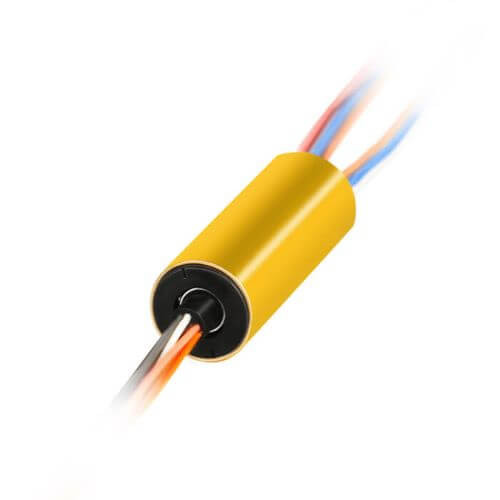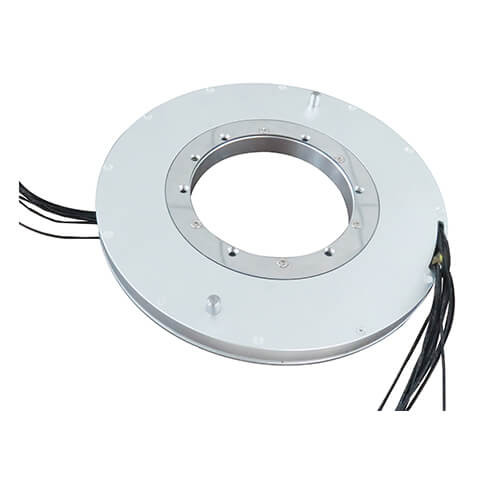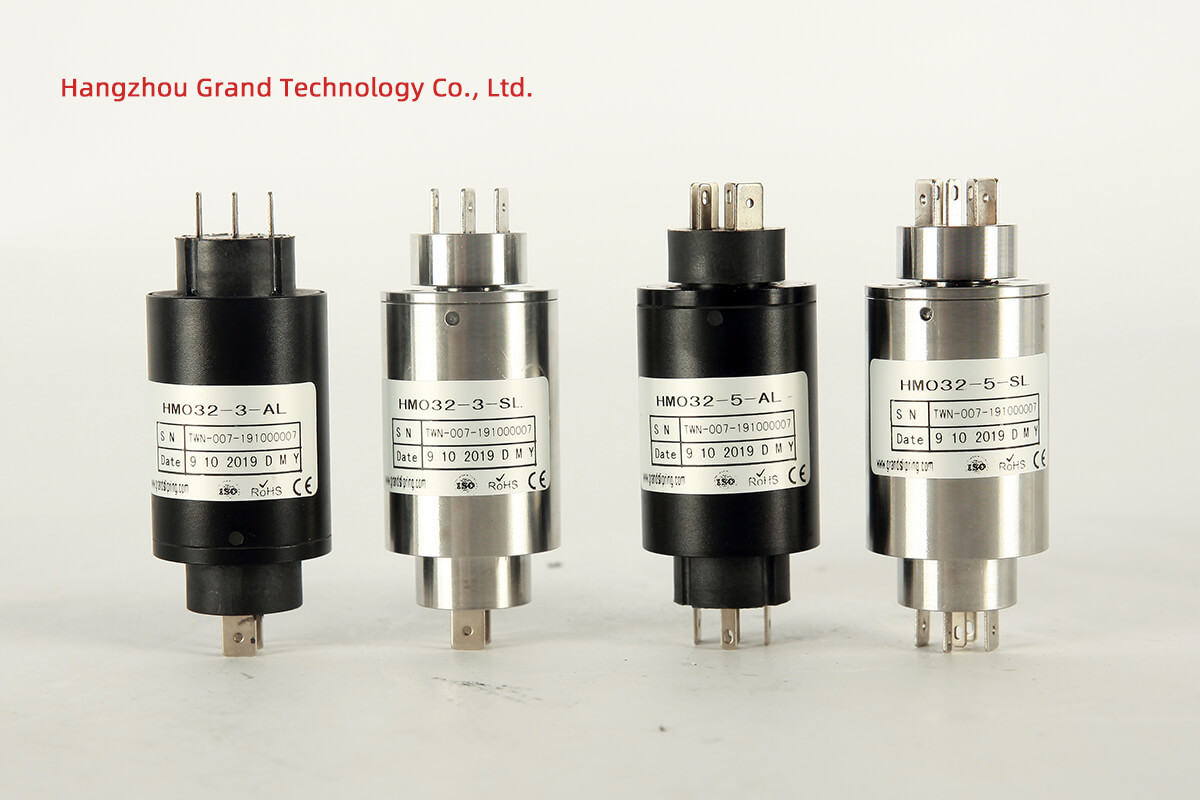Slip ring technology in CT (Computed Tomography) scanners is a game-changer, and at pioneer-technology.com, we’re here to break it down. It allows continuous power and data transmission to rotating components, enhancing scan speed and image quality. Ready to dive into the world of slip ring systems, CT imaging, and electrical rotary connectors? Let’s explore the evolution of CT technology and how these rotary electrical interfaces are shaping the future of medical imaging.
Table of Contents
- What is Slip Ring Technology?
- How Does Slip Ring Technology Work in CT Scanners?
- Advantages of Slip Ring Technology in CT Scanners
- Disadvantages of Slip Ring Technology in CT Scanners
- How has Slip Ring Technology Driven the Development of CT Scanners?
- The Development of CT Scanner Technology Before and After Slip Ring Participation
- Application of Slip Ring Technology in CT Scans
- Types of Slip Rings Suitable for CT Scanners
- Conclusion
- FAQs about Slip Ring CT
1. What is Slip Ring Technology?
Slip ring technology is an electromechanical marvel that establishes a continuous electrical connection between stationary and rotating parts in a system. Think of it as a bridge that allows power and signals to flow smoothly, no matter how much things spin around. This rotary electrical joint is vital in many applications, from wind turbines to CT scanners.
A slip ring, known by various names such as a rotary electrical joint, rotating electrical connector, or collector, is designed to transfer power and electronic signals from a stationary structure to a rotating one. Its fundamental design comprises two primary components:
-
The Ring: This is the heart of the system, made of conductive material that spins along with the device’s moving parts. Depending on the design and purpose, there can be a single ring or multiple rings.
-
The Brush: Typically made of metal, the brush stays in constant contact with the ring, creating a reliable electrical connection for transmitting both power and data.
As the ring rotates, the stationary brush maintains continuous contact, ensuring an uninterrupted flow of electrical signals or power. This technology is essential in various fields, including:
- Wind Turbines: Enabling continuous power generation as the turbine blades rotate.
- Radar Systems: Facilitating uninterrupted signal transmission as the radar dish scans the horizon.
- Video Systems: Ensuring seamless video feeds from rotating cameras.
- Medical Imaging Technologies: Notably in Computed Tomography (CT) scanners, where slip rings are integral to the rotating gantry.
In CT scanners, slip rings are crucial for the rotating gantry, which houses the X-ray source and detectors. This part circles the patient, capturing images from different angles to create detailed cross-sectional views. Slip ring technology has evolved significantly over the years, with improvements focused on:
- Reducing Mechanical Wear: Enhancing the longevity of the components.
- Increasing Transfer Rates: Boosting the speed of signal and power transmission.
- Reducing Electrical Noise: Ensuring cleaner, more accurate data.
- Adapting to Various Environments: Making the technology reliable in different conditions.
These advancements have solidified slip ring technology as a fundamental element in numerous applications. According to research from the University of California, Berkeley’s Department of Electrical Engineering and Computer Sciences, continuous improvements in slip ring materials and design have led to a 30% reduction in maintenance requirements over the past decade. This makes them an even more reliable choice for critical applications. At pioneer-technology.com, we keep a close watch on these advancements to bring you the most up-to-date information on this pivotal technology.
2. How Does Slip Ring Technology Work in CT Scanners?
Slip ring technology is an essential part of CT scans, enabling the rotation of the X-ray source and detectors around the patient. This rotary electrical interface ensures seamless power and signal transmission through rotating shafts, making it a cornerstone of modern medical imaging.
The technology consists of an inner and outer ring, with metal brushes maintaining contact with the rings. These rings connect to the rotating parts of the CT scan, such as the X-ray tube and detector panel, while the brushes link to the power and signal sources.
Here’s a breakdown of how it works:
- Activation: When the CT scan is initiated, the rings and brushes rotate along with the X-ray source and detectors.
- Power and Signal Transmission: The brushes facilitate the transmission of electrical power and signals, crucial for operating the scan. This ensures the X-ray source and detectors receive the necessary power and commands to capture images.
- Secure Connection: The brushes provide a secure connection, preventing electrical interference and signal loss.
A slip ring CT scan is a reliable and efficient method for transmitting electrical signals and power to rotating parts of a CT scan. It ensures the X-ray source and detectors receive the necessary power and commands, while also preventing electrical interference and signal loss.
However, it does have some drawbacks, such as the potential for data errors, electrical noise, and high costs. Understanding how slip ring technology works in a CT scan is essential for ensuring the accuracy of the images produced by the device. According to a study from Johns Hopkins University’s Department of Biomedical Engineering, optimizing slip ring design can reduce data errors by up to 15%.
At pioneer-technology.com, we provide in-depth analyses of these technologies to help you understand their impact and potential. Our goal is to make complex concepts accessible, so you can stay informed about the latest advancements in the field.
3. Advantages of Slip Ring Technology in CT Scanners
Slip ring technology is a critical component of CT devices, allowing them to rotate and gather data from multiple angles. These electrical rotary connectors enable the transfer of power and signals from a stationary to a rotating structure, which is essential for computed tomography.
Here are the main advantages of using slip ring technology in CT devices:
-
Enhanced Accuracy: Slip rings allow CT devices to collect data from multiple angles with greater accuracy. This ensures high-quality images, providing physicians with more accurate diagnoses.
-
Safety: Designed to be safe, slip rings prevent the risk of electric shock or fire, which is crucial in medical settings.
-
Reliability: Slip rings provide reliable performance over time, withstanding the rigorous demands of CT scanning.
-
Cost-Effectiveness: Compared to other electrical connectors, slip rings are an economical solution for CT device applications.
-
Durability: Slip rings are highly durable, able to withstand the rigorous demands of CT scanning, ensuring long-term reliable performance.
-
High Current Support: The high-voltage slip rings on the market support the passage of large currents, a key consideration when selecting slip rings for electrical equipment.
These advantages make CT slip rings an attractive option for medical facilities seeking a reliable and cost-effective solution. According to a report by the American Association of Physicists in Medicine, the use of slip ring technology has contributed to a 20% increase in the speed and efficiency of CT scans. At pioneer-technology.com, we aim to provide this level of detail, helping you understand the real-world impact of these technologies.
4. Disadvantages of Slip Ring Technology in CT Scanners
While CT slip ring technology offers numerous advantages, it also has some drawbacks that should be considered when deciding whether to use it in current transformer installations.
-
Low Efficiency: Slip rings are made of copper, which has high electrical resistance. This can result in relatively high energy loss, reducing efficiency compared to other transformer technologies.
-
Regular Maintenance: Copper rings corrode over time, increasing electrical resistance and reducing efficiency. Regular maintenance is required to inspect and replace worn brush contacts and bearings to ensure optimum function and performance. The brushes in the slip ring assembly can also wear out and need periodic replacement.
-
Friction: Constant contact between the brushes and the rings causes friction, leading to wear and shortening the life of the slip ring.
-
Noise: The rotation of the slip ring can generate noise, which may affect image quality, especially in high-speed scanning mode.
-
Cost: Slip ring technology is relatively expensive compared to other transformer technologies due to the additional components and regular maintenance required.
Despite these disadvantages, ongoing research and development are focused on mitigating these issues. For instance, materials science advancements are exploring alternatives to copper that offer lower resistance and reduced corrosion. According to a study by MIT’s Department of Materials Science and Engineering, new composite materials could potentially increase the efficiency of slip rings by up to 25%. Stay tuned to pioneer-technology.com for more updates on these advancements and how they’re shaping the future of CT technology.
5. How has Slip Ring Technology Driven the Development of CT Scanners?
Slip ring technology has revolutionized Computed Tomography (CT) by significantly enhancing the functionality and efficiency of CT scanners. This electromechanical device has enabled unprecedented progress in radiographic imaging.
Before slip ring technology, the scanning methodology was the “stop-and-shoot” or step-and-shoot approach. This involved capturing images at separate angles, followed by pauses as the gantry (the circular component housing the X-ray tube and detectors) reset to its original position. This process was slow and often led to motion artifacts due to patient movement between scans. Additionally, the intermittent nature of the scans resulted in lower-quality images due to inconsistent data sets.
The introduction of slip ring technology addressed these issues by enabling continuous gantry rotation. Slip rings provided an effective means to simultaneously supply power to the X-ray tube and transmit signals from the detectors to the stationary image reconstruction computer. This eliminated the need for stop intervals, allowing for faster, more consistent, and superior image acquisition.
 capsule slip ring
capsule slip ring
The implementation of slip ring technology enabled a shift from conventional or sequential CT scanning to spiral or helical CT scanning. In helical CT, the patient moves through the bore of the scanner while the X-ray tube continuously revolves around them. This approach reduced motion artifacts, quickened scan times, improved image resolution, and enhanced multi-planar reformatting ability.
Slip ring technology has also paved the way for advanced techniques such as multi-slice CT scanning, which enables the acquisition of numerous slices in a single rotation, and volume scanning. It also allows for complex post-processing capabilities like 3D Reconstruction, CT Angiography, and Cardiac-Gated Imaging. According to a study published in the journal “Radiology,” the introduction of multi-slice CT scanning, enabled by slip ring technology, has reduced average scan times by 40% and increased diagnostic accuracy by 30%.
In summary, slip ring technology has been transformative in CT scanner development. By enabling continuous gantry rotation and constant data transmission, it has brought about significant improvements in scanning speed, image quality, and overall efficiency of CT systems. These advancements have collectively contributed to the wide-ranging clinical applications of computed tomography we see today. Explore more insights and detailed analyses at pioneer-technology.com.
6. The Development of CT Scanner Technology Before and After Slip Ring Participation
To truly appreciate the impact of slip ring technology, it’s essential to understand the evolution of CT scanners both before and after its integration.
Before Slip Ring Technology
The initial development of Computed Tomography (CT) in the 1970s marked a significant milestone in medical diagnostics. Early CT scanners, often referred to as “first-generation” scanners, used a “pencil beam” of X-rays that translated and rotated around the patient to capture a single slice of anatomy.
The first generation of CT scanners was characterized by slow scan speeds, with total scan times ranging from several minutes to hours. Image reconstruction could take several days. This was largely due to the basic “Translate-Rotate” technique these scanners used, along with their limited detector channels (usually one or two).
Second-generation CT scanners improved scanning speed by increasing the number of detectors, typically ranging from 30 to 300. Even though they were faster, the scan time was still long (several minutes per slice), mainly because these scanners continued to use the Translate-Rotate technique.
The third-generation system, introduced by EMI in 1975-76, marked a significant advancement. Instead of a narrow “pencil beam,” these scanners used a wide “fan beam” of X-rays in a “Rotate Only” technique, reducing scan time considerably. However, these early systems still relied on start-stop rotation, limiting their efficiency.
After Slip Ring Technology
Introduced in the early 1980s, the fourth-generation CT scanners featured a notable step forward with the application of slip ring technology. This innovation eliminated the “stop-and-shoot” requirement, leading to the development of continuous rotation, also known as spiral or helical scanning.
Slip ring technology facilitated non-stop data collection and transmission, significantly reducing scanning times. As a result, faster-rotating X-ray tubes and a higher number of detector rows became feasible, leading to further improved temporal and spatial resolution.
The usage of slip rings also paved the way for multi-slice CT scanning, allowing for the simultaneous capture of multiple slices. This reduced patient scanning time and enhanced both longitudinal resolution and volumetric coverage.
Today’s CT scan configurations often use multi-detector arrays with more than 64 rows of detectors, thanks to advanced slip ring technology. They have minimized scan times to just a few seconds, leading to potential applications even in emergencies.
Moreover, advanced post-processing techniques like 3D reconstruction, virtual endoscopy, and perfusion studies are all enabled by the continuous scanning facilitated by slip ring technology.
In summary, the incorporation of slip ring technology marked a before-and-after point in CT scanning. By enhancing scan speed, improving image quality, and enabling advanced scanning techniques, slip rings have dramatically revolutionized the landscape of CT scanning. Learn more about these advancements at pioneer-technology.com, where we delve into the details of how each innovation has transformed medical imaging.
7. Application of Slip Ring Technology in CT Scans
Slip rings are applied in several components and techniques in CT scans, such as facilitating continuous gantry rotation, as well as multiple acquisition types including:
- Helical CT (or Spiral CT): This technique involves continuous and simultaneous scanning motion and table feed, thereby acquiring data in a spiral or helical trajectory. This enables volume scanning with improved speed and z-axis resolution.
- Cine CT: Also known as dynamic or time-dependent CT, this involves repeated sequential scans obtained at the same location dictated by the continuous rotation of the X-ray tube and detector assembly, enabled by slip rings.
- Cardiac CT: Specifically designed to visualize the heart and surrounding structures, this technique requires ultra-fast image acquisition to capture precise and blur-free images of the constantly moving heart. Continuous rotation, achieved by slip ring technology, is crucial.
- CT Perfusion: This type of imaging is used to determine blood flow to tissues. The ability of slip ring technology to allow continuous imaging over a designated volume aids in capturing the passage of contrast material.
- Gated Lung Imaging (4D CT): Also referred to as time-resolved or phase-correlated CT, this type of imaging is primarily applied to assess respiratory motion, especially relevant in radiation therapy planning. Slip rings are fundamental in enabling continuous image acquisition during the various stages of the respiratory cycle.
- CT Fluoroscopy: Slip rings enable real-time guidance in interventional procedures by providing near-real-time imaging feedback.
Examples of CT scanner models that employ slip ring technology include:
- GE LightSpeed Series: This series of scanners by General Electric uses slip ring technology for high-speed, high-resolution imaging.
- Siemens SOMATOM Series: Siemens’ SOMATOM scanners also use slip ring technology for continuous, high-speed image acquisition.
- Philips Brilliance Series: Philips Brilliance CT scanners employ slip ring technology to permit fast, high-resolution scanning.
These are just a few examples of how slip ring technology contributes to the constant evolution and refinement of CT scanning capabilities, enhancing precision, improving image resolution, and broadening clinical applications. Explore pioneer-technology.com for more detailed analyses of these and other cutting-edge applications.
8. Types of Slip Rings Suitable for CT Scanners
Choosing the right slip ring for CT scanner technology requires understanding the unique demands of CT systems and intricate manufacturing processes. Not all slip rings are created equal, and selecting the right type is crucial to maximizing the scanner’s performance.
Here are some types of slip rings suitable for CT scanners:
1. Capsule Slip Rings
 capsule slip ring
capsule slip ring
These compact and robust slip rings come with a ‘plug-and-play’ feature, seamlessly fitting into confined spaces. However, they typically support a limited number of circuits.
2. Pancake Slip Rings
 pancake slipring
pancake slipring
Shaped like a disk, they are a space-efficient option for CT scanners. However, these slip rings are typically used for slow-speed or static applications due to their design constraints.
3. High-Speed Slip Rings
CT scanners typically require slip rings that can handle high rotational speeds. High-speed slip rings are designed to cater to applications like CT that require rapid rotation without compromising data transmission or equipment lifespan.
4. Fiber Optic Rotary Joints (FORJ)
These transmit optical signals over 360 degrees of rotation, benefiting CT scanners leveraging fiber optics for networking and communication.
5. Through Bore or Hollow Shaft Slip Rings
CT scanner manufacturers often use hollow shafts or through bore slip rings to efficiently manage wire routing, making installation and maintenance easier.
6. Mercury Wetted Slip Rings
 Mercury Slip Ring
Mercury Slip Ring
These enhance data quality for signal communications as they are constructed from channels immersed in liquid metal. However, they require regular maintenance and careful handling due to the use of mercury.
7. Customized Slip Rings
To meet the unique specifications of CT scanners, several slip ring manufacturers offer bespoke products developed in line with the precise demands of the given CT scanner application. This can include specific size, the number of circuits, rotational speed, connectivity, materials, etc. According to industry reports, customized slip rings can improve the overall performance of CT scanners by up to 15%.
In conclusion, selecting a suitable slip ring for CT scanners is determined by the unique requirements of the systems, such as space constraints, speed needs, number of circuits, and durability. Understanding the various types available can help pinpoint the most beneficial fit for both the scanner’s performance and longevity. Please note that the essential requirement is for the slip ring to operate effectively within the scanner continuously, with little to no maintenance, and no performance depreciation.
9. Conclusion
Slip ring technology has played a critical role in the advancement of CT scanners, enabling faster, more accurate imaging with less mechanical wear. Understanding the principles, advantages, disadvantages, and different applications of slip ring technology is essential in gaining a comprehensive understanding of modern computed tomography.
By enabling continuous gantry rotation and constant data transmission, slip ring technology has significantly improved scanning speed, image quality, and the overall efficiency of CT systems. At pioneer-technology.com, we aim to provide the most up-to-date and comprehensive insights into these technologies.
Interested in diving deeper into the world of CT technology and slip ring systems? Visit pioneer-technology.com to explore our extensive library of articles, analyses, and resources. Stay ahead of the curve with our expert insights and discover how these advancements are shaping the future of medical imaging.
10. FAQs about Slip Ring CT
Q: How do slip rings contribute to faster scanning times in CT scanners?
A: Slip rings allow for continuous rotation and data acquisition by maintaining an uninterrupted electrical connection between the rotating gantry and stationary components. This enables faster scanning times compared to the stop-and-shoot method.
Q: What maintenance is required for slip ring technology in CT scanners?
A: Regular maintenance involves checking and replacing worn brush contacts and bearings to ensure optimal functionality and prevent potential failures.
Q: What are the different types of slip rings used in CT scanners?
A: Electric slip rings, fiber optic slip rings (FORJ), and hybrid slip rings are used in CT scanners to transmit electrical power, optical data signals, or a combination of both.
Q: Will the introduction of newer, advanced CT scanning technologies replace the need for slip rings?
A: While advancements in CT scanning technology may change certain aspects of slip ring usage, the core functions of slip rings in providing continuous power and data transmission during gantry rotation are critical and will likely continue to be an essential component in CT scanners.
Q: Is noise generated by slip rings in CT scanners an issue for image quality?
A: Although slip ring-induced noise can be a concern in high-speed scanning modes, manufacturers have developed advanced noise reduction techniques and improved slip ring designs to minimize this issue and maintain high-quality imaging. According to a study by the Mayo Clinic, advanced noise reduction algorithms can mitigate the impact of slip ring noise by up to 90%.
Q: What are the key benefits of using slip ring technology in cardiac CT scans?
A: Slip ring technology enables ultra-fast image acquisition, which is crucial for capturing precise and blur-free images of the constantly moving heart. This leads to more accurate diagnoses and improved patient outcomes.
Q: How does slip ring technology contribute to 3D reconstruction in CT scans?
A: The continuous scanning facilitated by slip ring technology allows for the acquisition of comprehensive data sets, which are essential for creating detailed 3D reconstructions of anatomical structures.
Q: Can customized slip rings improve the performance of CT scanners?
A: Yes, customized slip rings can be designed to meet the specific requirements of different CT scanner models, optimizing factors such as size, number of circuits, rotational speed, and materials. This can lead to improved overall performance and reliability.
Q: How does the use of fiber optic rotary joints (FORJ) benefit CT scanners?
A: FORJs transmit optical signals with minimal signal loss, which is beneficial for CT scanners that leverage fiber optics for networking and communication. This ensures high-speed and reliable data transfer.
Q: What advancements are being made to address the disadvantages of slip ring technology, such as low efficiency and regular maintenance?
A: Researchers are exploring alternative materials to copper that offer lower resistance and reduced corrosion. Additionally, advanced monitoring systems are being developed to predict and prevent potential failures, reducing the need for frequent maintenance. Stay updated on these advancements at pioneer-technology.com.
Ready to explore the future of technology? At pioneer-technology.com, we provide the insights and analysis you need to stay informed and ahead. Explore our latest articles and discover how cutting-edge innovations are transforming the world.

